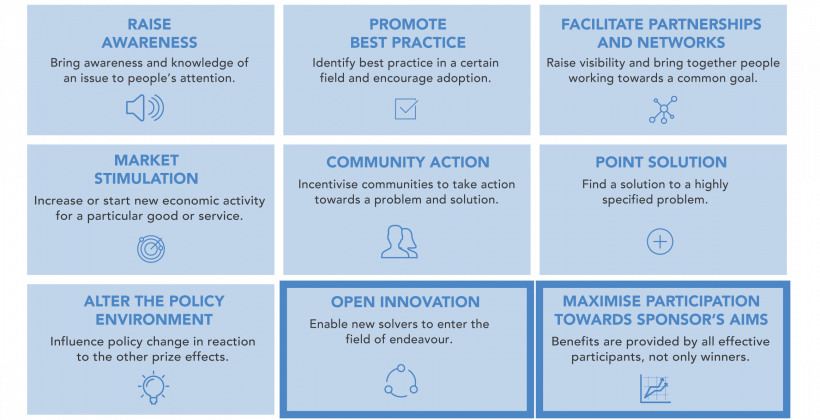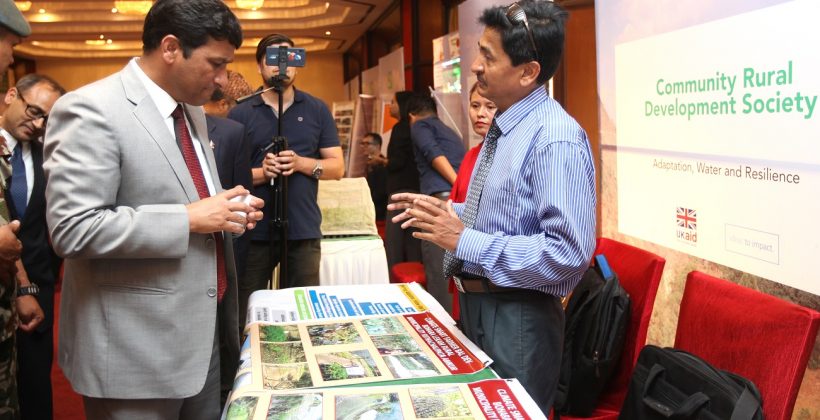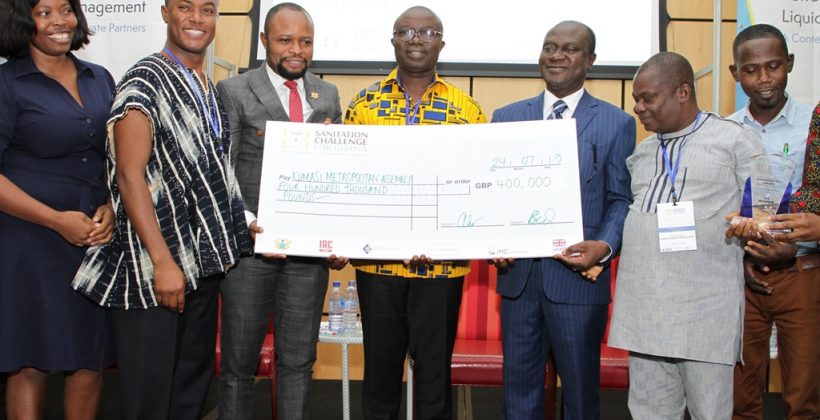Innovation prizes, also called innovation inducement prizes or challenge prizes, reward one or more participants who first or most effectively solve a predefined challenge, leaving complete freedom on how to get to the solution. The reward is often financial but can also include additional support.
Managed by an IMC Worldwide-led consortium and evaluated by Itad, Ideas to Impact designed and ran prizes that spurred participants to develop innovative solutions to problems faced by the poor in Africa and South Asia. For Ideas to Impact, innovation did not have to be technological but it could involve, for example, a change in behaviour or practice or the design of new business models that could successfully scale up technologies. So prizes’ objectives ranged from incentivising the development of services that provide farmers with access to climate information in Kenya to encouraging Ghana’s local government to improve urban sanitation to benefit the poor, to stimulate the market for off-grid refrigerators in sub-Saharan Africa.
What you can achieve with innovation prizes
While innovation prizes have a historic pedigree (the British Longitude Prize dates back to 1714), their application to international development only started in the 2000s, with donors such as USAID, UKAid, the World Bank and the Bill & Melinda Gates Foundation.
However, Ideas to Impact has been the first programme to use prizes on such a scale and launched when few evaluations of other prizes were publicly available so the programme had a strong learning mandate.
We have collected all this learning in a series of publications. Specifically, ‘Rising to the challenge: How to get the best value from using prizes to drive innovation for development’ focuses on the unique value of innovation prizes to achieve development outcomes and how to get the most from them. In this blog post, we highlight key lessons but you can read the full report here.
Among the things we have learnt is that innovation prizes can be effective at driving innovation that contributes to achieving development outcomes. Moreover, while prizes can bring several advantages to a sponsor, their comparative strength over other forms of funding lies in their ability to attract a higher number and a greater diversity of individuals and organisations to solve a development challenge. These unique advantages correspond to the ‘prize effects’ of open innovation and maximising participation towards the sponsor’s aims (see the figure below).
Open innovation occurs when prizes incentivise solvers to work on a problem in a field that is new to them and this may include people who are directly affected by the problem, thus adding in the ‘Community Action’ prize effect. Maximising participation towards the sponsor’s aims occurs when the efforts of all of those who participate effectively for a period of time, not just the winners, contribute towards solving a problem.

“What really excites me about the Ideas to Impact programme is the dramatic shift in mentality of letting solvers solve the problem the way they see best rather than having the route to solving the problem pre-defined by the donor. This is a great stepping stone for moving beyond aid.”
– Bryony Everett, Ideas to Impact programme director
Getting the most value out of using prizes for development
A key difference between a traditional competitive grant and an innovation prize is that in the former the sponsor pre-selects who is going to undertake the task and pays them upfront. In a prize, participants could be multiple, none of whom are pre-selected and any of them may win the prize upon completion of the task. However, only the winners are rewarded, which increases value for money (VFM) for the sponsor but poses risks to participants, especially in low-income countries. This needs consideration when designing the prize.

The period after prize awards are made is crucial to ensure that the prize achievements in solving a challenge are not lost. Therefore, it is key to understand and forge links with the actors who will build on the momentum generated by the prize after it closes. Alternatively, a prize could be combined with other funding mechanisms, ideally, as part of a single programme, to harness the unique value each provides. For example, you could combine a prize designed to drive innovation towards a tightly focused problem (point solution) with a follow-on component that builds on its success, such as providing additional funding to the winners to support further R&D.
For innovation prizes to be most effective in contributing to addressing development challenges, Ideas to Impact’s evaluation and learning suggests the following need attention:
- Ensuring the prize is connected to an enabling environment and ecosystem. Keep in mind the assumptions made about the environment that the prize operates within, such as supportive policies, government champions, etc. Identify which are critical to success, if any can be brought under the prize team’s control or if they depend on complementary support.
- Thinking through prize team design and partner selection. Prize teams need to be able to respond to changes in the wider environment, and your selection of partners can have a strong influence on the prize’s success. When selecting a national partner, ensure that they have no vested interest in any of the solvers to avoid bias.
- Targeting the right participants and supporting them to participate. Depending on the prize’s objectives, it will sometimes be necessary to target particular people or organisations and then allocate sufficient communications resources to reach them. In a developing country context, this will mean considering appropriate support to participants.
- Assessing the risks and ethics of running prizes for development. This includes paying close attention to who is included or excluded from the prize and the burden on participants, especially in resource-poor contexts.
- Having reasonable expectations of prize participants. Innovation prizes incentivise people to adopt a new priority or way of working. If the goal is to have many people participate, the prize will need to be designed so the burden of risk is reasonable for target participants.
To learn more about the unique value of innovation prizes for development and how to get the most from them, read ‘Rising to the challenge: How to get the best value from using prizes to drive innovation for development’.
‘Evaluating the value for money of Ideas to Impact’s innovation inducement prizes’ explores the approach we took to establishing the VFM of the Ideas to Impact prizes.
‘Evaluating the results of innovation prizes for development: Reflections and recommendations from practice’ reflects on the experience of evaluating the Ideas to Impact prizes and draws out lessons on how to best evaluate future prizes for development.
If you are looking for hands-on, step-by-step guidance on how to run a prize in a development context, in September I2I will publish ‘Innovation Prizes for Development: a practical handbook for using prizes to help solve development challenges’. Click here to subscribe to their newsletter and be the first to learn when the handbook is out.
Cover photo: In July 2019, Kumasi Metropolitan Assembly was announced as the first-place winner of the Dignified City Award, the last stage of the Sanitation Challenge for Ghana, in the Metropolitan and Municipal Assembly category.
This blog was originally published on the I2I website.


